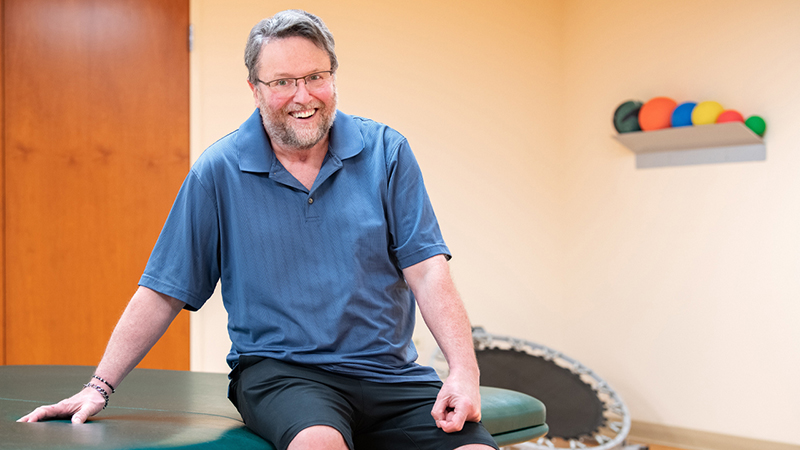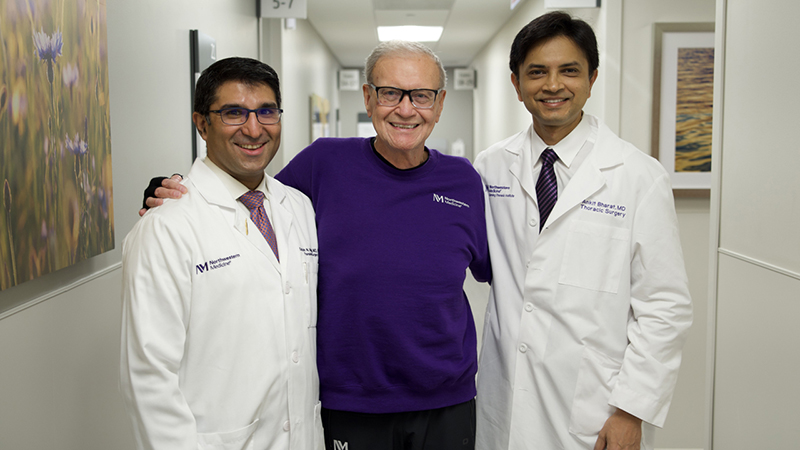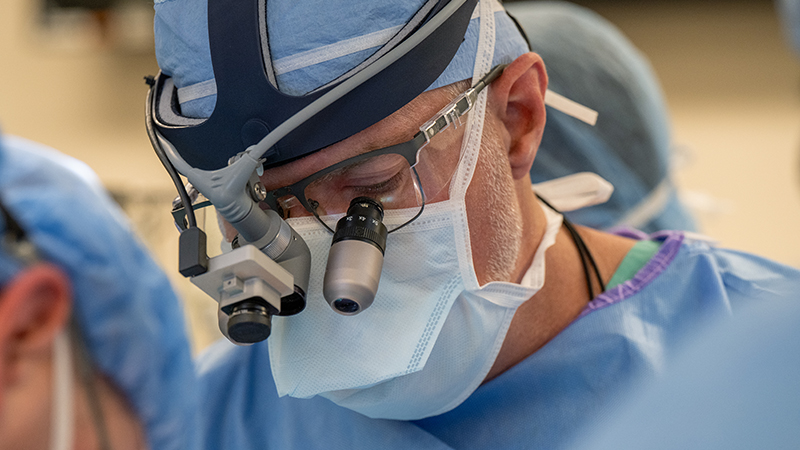Breast Cancer at 35
Published September 2021
Kindergarten Teacher Learns Valuable Lesson
Too young to get a mammogram, Katie discovered a lump in her breast in the summer of 2018. Her early self-discovery led to a diagnosis of bilateral cancer at age 35, but Katie met cancer head-on with the help of Northwestern Medicine Proton Center.
“Breast cancer was certainly not on my radar, certainly not at my age. I don’t have any family history, and we’re still not sure what caused it,” she said. “It’s important for people to feel empowered and to be their own advocate. You know your body best.”
After Katie discovered a lump on her left breast, she decided to switch her care to Northwestern Medicine, where she had an MRI. The MRI confirmed the left-sided tumor, and it also showed something suspicious on the right side of her left breast. Since Katie was scheduled for surgery, the decision was made to also remove the lump on the right side. In a pathology post-surgery report, Katie learned the right lump was also cancer.
Katie did not need chemotherapy, but the photon radiation treatments could potentially cause negative side effects to her heart and other organs due to the location of the tumor in her left breast.
While conventional photon radiation has helped save the lives of many women, in some cases it can expose the heart, lungs and other organs to unnecessary radiation, resulting in coronary heart disease, lung scarring and secondary malignancies later in life. Research shows cardiac complications occur more frequently in people who undergo radiotherapy for left-sided breast cancer.
Better Cancer Treatment
Proton therapy is an alternative treatment option for some patients that can help avoid these complications. Proton therapy uses heavy, positively charged atomic particles instead of the standard X-rays that are used in conventional radiation therapy. The protons can be controlled with greater precision to conform to the shape of the tumor, reducing radiation damage to surrounding healthy tissues and organs, and decreasing the risk of secondary cancer caused by radiation therapy.
“For younger patients like Katie, and those who have left-sided tumors, proton therapy may significantly reduce the risks of damaging other organs, and there may be fewer side effects in the future,” explains Katie's radiation oncologist.
Katie's radiation oncologist used a comparative plan to show Katie the difference between conventional radiation and proton therapy, and to show how proton therapy is able to shape dose around the heart and lungs.
Katie took a leave of absence from her teaching job to undergo seven weeks and 33 sessions of radiation treatment. She commuted three hours each day from the city by train (and taxi) to Northwestern Medicine Proton Center in Warrenville, one of the few proton therapy centers in the Midwest and the only one in Illinois.
“I read a lot of books, and got to know the train conductors really well,” Katie says.
Katie wasn’t sure what to expect but quickly learned that proton therapy was noninvasive, and she experienced minimal side effects. She says the center offers a healing environment.
“It’s difficult to put into words what they did for me,” Katie says. “In the face of something that could have been unpleasant, my care team was so kind and welcoming, and I was always greeted by a friendly face. Within the building, you’re surrounded by survivorship tributes from people who travel from all over the country. It is a testament to the work they do here.”
Katie is cancer free and happy to be back in the classroom. As she delivers lessons, she carries perhaps the biggest lesson she learned through her cancer journey.
“Having cancer puts things into perspective in a way that I’m not sure everyone gets in life,” she explains. “Don’t sweat the small stuff. There’s so little you can control, and the experience with cancer is out of control from beginning to end. When you have something as big as a cancer diagnosis, you don’t have bandwidth to worry about little things.”





